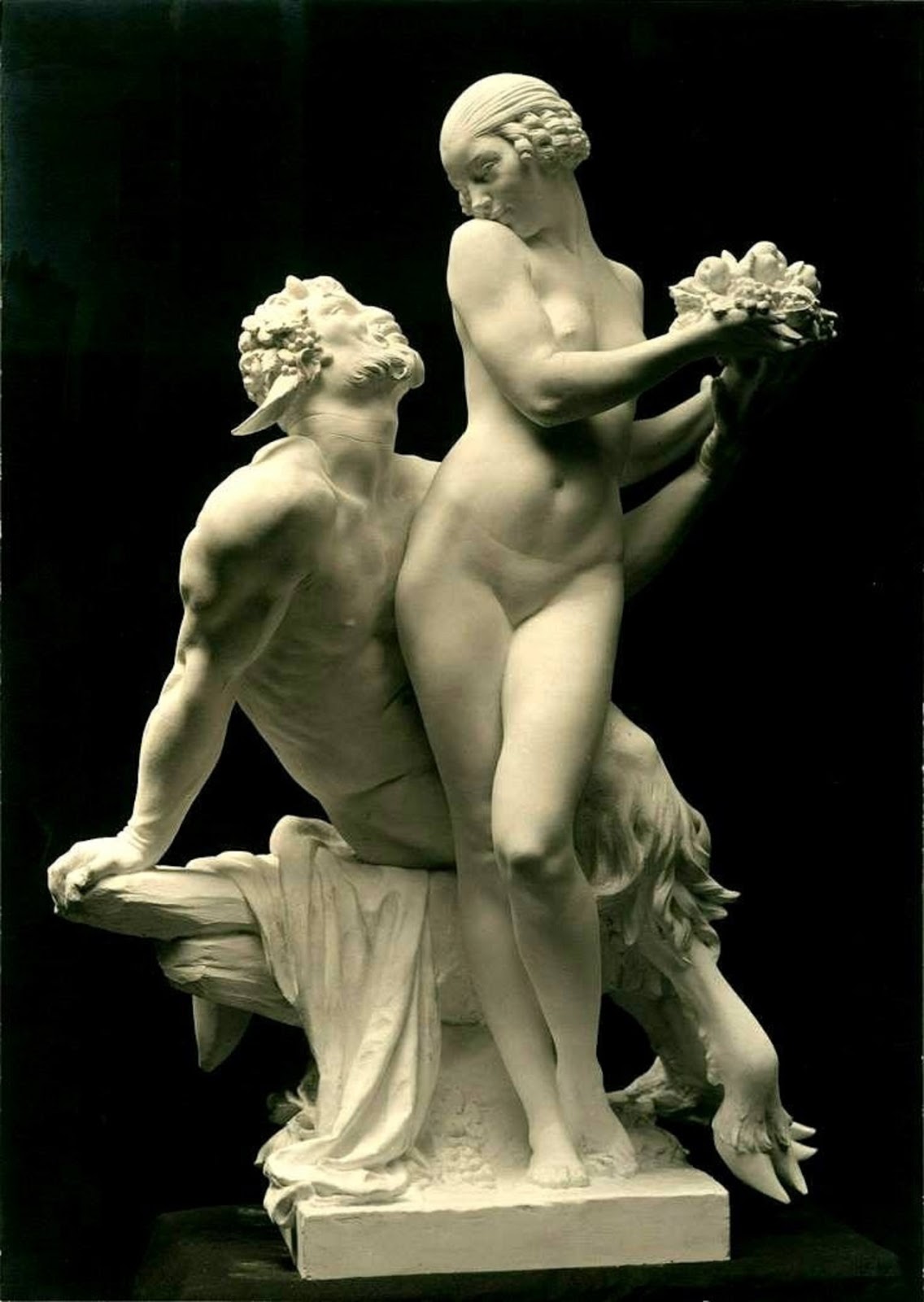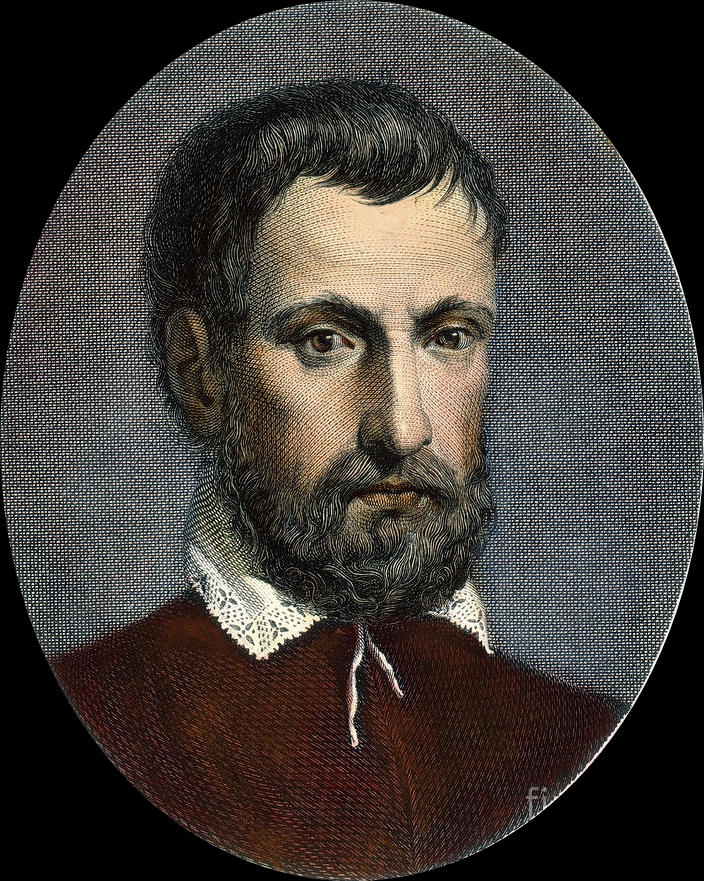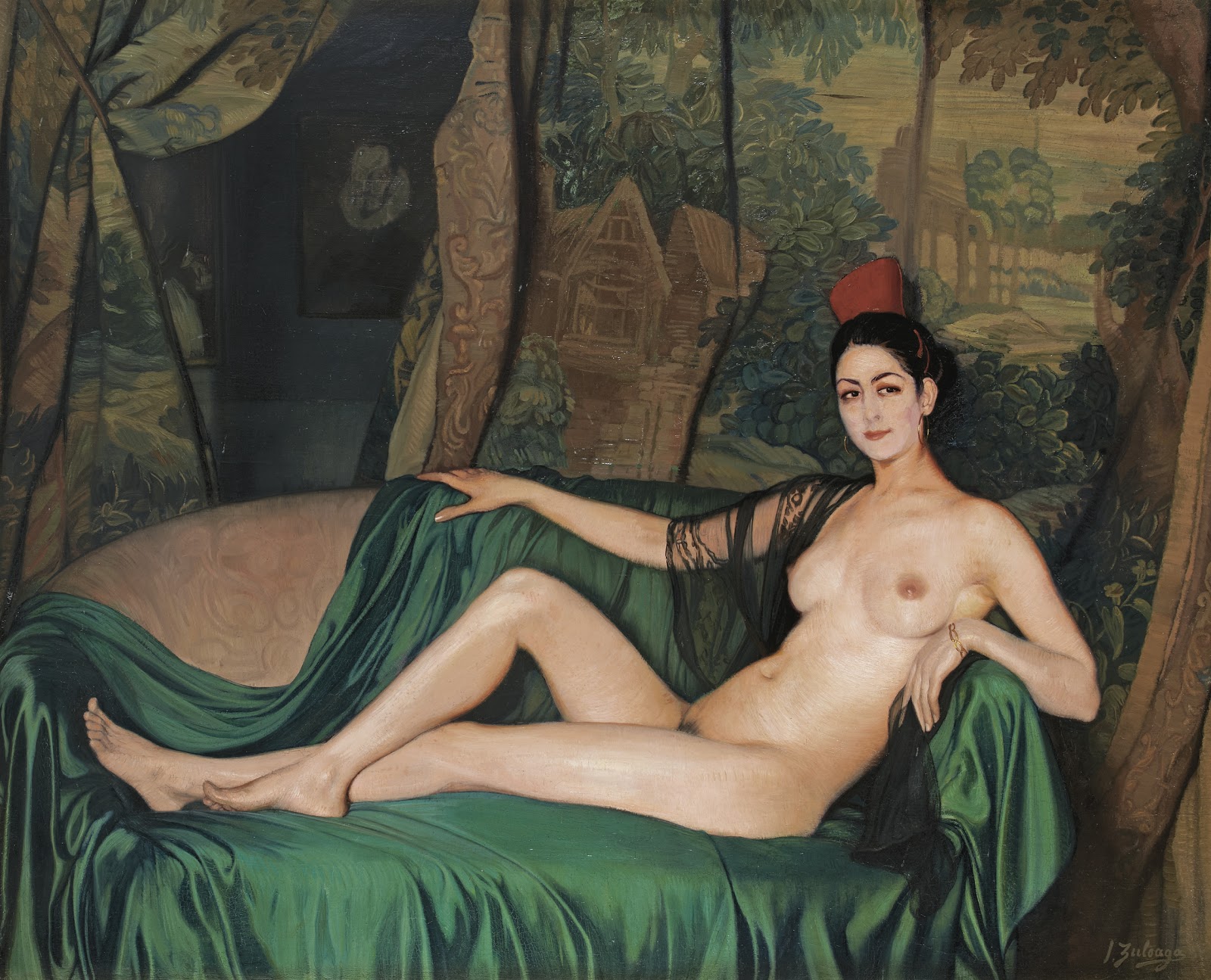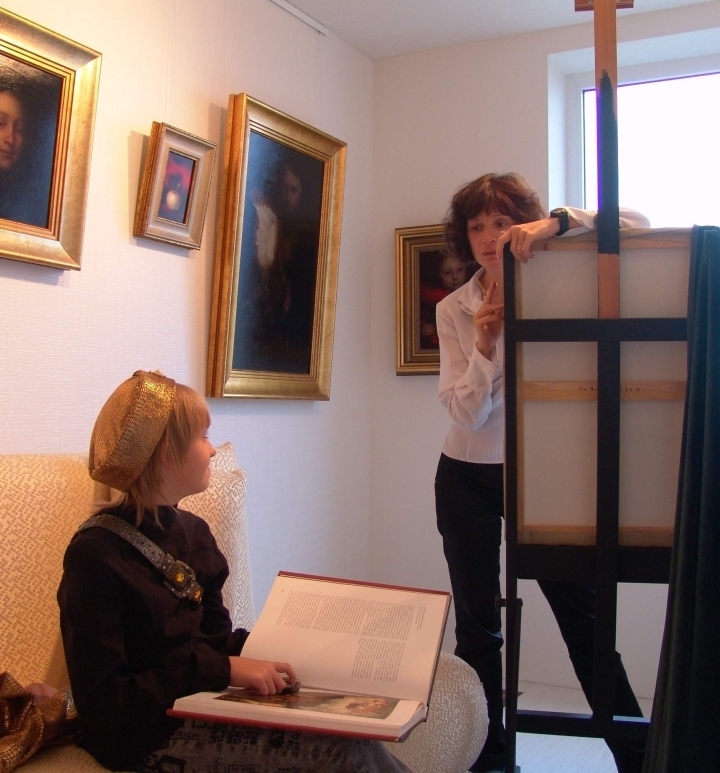"Dream Lady", also known as the Eugene Field Memorial, is a bronze sculpture by Edward Francis McCartan (August 16, 1879 - September 20, 1947).
Eugene Field
It is located in Lincoln Park, Chicago.
Eugene Field (1850-1895) was an author and journalist, and wrote a humor column, "Sharps and Flats", for the Chicago Daily News. He was also well known as an author of poems for children.
The memorial cost $35,000, and was funded by public school children, citizens of Chicago and the B. F. Ferguson Monument Fund. It was dedicated on October 9, 1922.
Erected in 1922 by school children and citizens aided by the Benj. F. Ferguson Fund unsigned | From Wikipedia, the free Encyclopedia.
↧
Edward McCartan | Dream Lady, 1922, Lincoln Park
↧
Edward McCartan | Figurative/Art Déco style sculptor
Edward Francis McCartan (August 16, 1879 - September 20, 1947) was an American sculptor, best known for his decorative bronzes done in an elegant style popular in the 1920s.
Born in Albany, New York, he studied at the Pratt Institute, with Herbert Adams. He also studied at the Art Students League of New York with George Grey Barnard and Hermon Atkins MacNeil, and then in Paris for three years under Jean Antoine Injalbert before his return to the United States in 1910.
↧
↧
Lorenzo Bartolini ~ Dircé, 1834 | Musée du Louvre, Parigi
Dircé. Marble, done in 1824-1834 for the duke of Devonshire.
Ingres Jean-Auguste-Dominique (1780-1867)
Portrait of Lorenzo Bartolini, Musée du Louvre
Dircé (/ˈdɜrsiː/; Ancient Greek: Δίρκη, pronounced Dirke, modern Greek pronunciation Dirki, meaning "double" or "cleft") was the wife of Lycus in Greek mythology, and aunt to Antiope whom Zeus impregnated. Antiope fled in shame to King Epopeus of Sicyon, but was brought back by Lycus through force, giving birth to the twins Amphion and Zethus on the way. Dirce hated Antiope and treated her cruelly after Lycus gave Antiope to her; until Antiope, in time, escaped.
↧
Ferdinando Vichi ~ Masquerade, c.1900 | La Belle Époque
Italian Sculptor Ferdinando Vichi (1875-1945) was one of the talented band of Tuscan sculptors associated with the Bazzanti gallery in Florence. His work in marble and alabaster demonstrates his high technical ability.
↧
Benvenuto Cellini | Baroque/Mannerist style sculptor
Benvenuto Cellini, (born Nov. 1, 1500, Florence-died Feb. 13, 1571, Florence), Florentine sculptor, goldsmith, and writer, one of the most important Mannerist artists and, because of the lively account of himself and his period in his autobiography, one of the most picturesque figures of the Renaissance.
Early career
Cellini, resisting the efforts of his father to train him as a musician, was apprenticed as a metalworker in the studio of the Florentine goldsmith Andrea di Sandro Marcone. Banished to Siena as a result of a brawl in 1516, he returned to Florence during 1517-19 and then moved to Rome.
↧
↧
Ron Monsma | Figurative/Baroque style painter
"Whether I am painting a still life or figure (or landscape) light plays an important role. I work in the Baroque tradition where light reveals and distills form and all its nuances. This is stage lighting where illumination exposes a mood, a setting or situation or some event about which we are not quite certain. It is light that invites the viewer to make discoveries in the shadows” - Ron Monsma, Associate Professor of Fine Arts.
↧
Giovanni Battista Lombardi | Ruth, 1864
Commissioned in 1859 by contessa Marietta Mazuchelli Longo, Lombardi's Ruth was the first of the artist's Old Testament subjects; a series which also included his Rebecca, Deborah, Susanna and Sulamite. Lombardi's reputation had been built on his sensitive and innovative memorial sculpture, which he produced with his brother Giovita, in the studio in Rome which they set up in 1852. The contessa Longo was a long-time supporter of Lombardi and indeed had previously commissioned a funerary monument to her deceased husband from the artist.
↧
Antoine Bouvard | A Venetian Scene
Antoine Bouvard Senior, also known as Marc Aldine (1870–1956) painted Venetian scenes and exhibited his works in Paris and Venice. He was born at St. Jean-de-Bournay in L'Isere in 1870. He trained as an architect and studied art and architecture under Constant-Dufeus, at the Ecole des Beaux-Arts in Paris.
He became the Director of Architectural Services for the Seine, and was responsible for the construction of the Bourse du Travail and the Boulevard Morland in Paris. His paintings show the influence of Felix Ziem, reflecting his love of Venice in the delicacy and fluidity of his use of colour, capturing in his paintings, the warmth and beauty that he found there.
↧
Friedrich Nerly | Seascape painter
Friedrich Nerly or Federico Nehrlich (October 26, 1842 - 1919) was an Italian painter who specialized in Seascapes. Nerly was of Prussian nationality. He completed his first studies with his father, a well known Landscape artist.
He later enrolled in the Academy of Fine Arts of Venice, studying under professors Eugene de Blaas, Federico Moja and Pompeo Mariano Molmenti. From 1862-65 and in 1866, he served in the army. He visited the principal artistic cities of Germany: Düsseldorf, Weimar, Munich, and Dresden. In 1868, he traveled to Francia, Austria, Dalmatia, and Montenegro, and visited Rome, Naples and Sicily.
↧
↧
Ignacio Zuloaga - Madame Souty Reclining on a Sofa, 1921
Ignacio Zuloaga y Zabaleta (1870-1945), Spanish genre and portrait painter noted for his theatrical paintings of figures from Spanish culture and folklore.
For biographical notes -in english and italian- and works by Zuloaga see Ignacio Zuloaga | Genre/Realist painter.
↧
Pio Fedi | Love story of Dionora and Ippolito
Pio Fedi - Dionora de Bardi and Ippolito Buondelmonti
In the present sculpture, Pio Fedi (1816-1892) presents us with an image of the courtship of Dianora. Ippolito's gently persuasive gesture conveys his intense and immediate affection for Dianora, whilst her apparent reticence highlights the agonistic relationship between their two families and the difficulties associated with their union. Pio Fedi's training as a goldsmith and engraver is evident in the virtuoso carving of the rich fabrics and differing surfaces. The intricacy of the carving, together with the small scale of the group, lends to it a precious, jewel-like quality. The signature compares closely with that of Pio Fedi's Il sospetto in the Ashmoleon, also dated 1872, and which, according to Nicholas Penny, may have been sculpted as a special piece by Pio Fedi himself.
↧
Ferdinando Vichi | Group of Putti Musicians
Like many other late nineteenth-century sculptors, Ferdinando Vichi (1875-1945) often took inspiration from Romantic and Tender subjects. His compositions are varied in subject matter, ranging from Romantic busts, women and children to orientalist themes and Renaissance-inspired models.
↧
Ferdinando Vichi | Romantic sculptor of La Belle Époque
Ferdinando Vichi was born in Florence in 1875 and died there in 1941. He was well-known and much appreciated sculptor who produced numerous works of art, including busts and tomb-stones.
Ferdinando Vichi was a central figure in the production of Florentine sculpture at the end of the 19th century. He is associated with the sculptors Cesare Lapini, Pietro Bazzanti and Guglielmo Pugi, all of whom executed works at The Galleria Bazzanti. The gallery, originally Bazzanti's studio, was inaugurated in 1822 and is still open today. His compositions are varied in subject matter, ranging from busts after the Antique to orientalist themes and Renaissance-inspired models. Like many other late nineteenth-century sculptors, Vichi often took inspiration from classical antiquity. Historicising romantic subjects were very popular in Italian sculpture of the late 19th century.
↧
↧
Édouard Cortès | Paris painting
"I was born from and for painting…" Èdouard Cortès
Édouard Leon Cortès (1882-1969) is an French painter, known for his Paris cityscapes in a variety of weather and night settings. Édouard Leon Cortès was born in Lagny-sur-Marne, a few miles east of Paris.
For biographical notes -in english and italian- and other works by Cortès see Edouard Cortes ~ Post-Impressionist painter.
↧
Leonardo da Vinci ~ Come la scienza dell'astrologia nasce dall'occhio, perché mediante quello è generata
Trattato della Pittura- Parte prima /13
Nessuna parte è nell'astrologia che non sia ufficio delle linee visuali e della prospettiva, figliuola della pittura; perché il pittore è quello che per necessità della sua arte ha partorito essa prospettiva, e non si può fare per sé senza linee, dentro alle quali linee s'inchiudono tutte le varie figure de' corpi generati dalla natura, e senza le quali l'arte del geometra è orba.
↧
Leonardo da Vinci ~ Come la pittura avanza tutte le opere umane..
Trattato della Pittura - Parte prima /15
L'occhio, che si dice finestra dell'anima, è la principale via donde il comune senso può piú copiosamente e magnificamente considerare le infinite opere di natura e l'orecchio è il secondo, il quale si fa nobile per le cose racconte, le quali ha veduto l'occhio. Se voi istoriografi, o poeti, o altri matematici, non aveste con l'occhio visto le cose, male le potreste voi riferire per le scritture.
↧
John Atkinson Grimshaw | Moonlight painter
John Atkinson Grimshaw (1836-1893) was an British Victorian artist who became famous for his sombre views of the dockyards and his nocturnal scenes of urban lanes with leafless trees silhouetted against the moonlight sky.
During his later life, he became a close friend of James McNeill Whistler who admired his work and admitted: "I considered myself the inventor of nocturnes until I saw Grimmy’s moonlight picture".
For biographical notes -in english and italian- and other works by Grimshaw see Atkinson Grimshaw | Victorian-era painter.
↧
↧
Olha (Olga) Akasi, 1970 ~ Figure/Symbolist painter
Ольга Акаси was born in Kiev, Ukraine. Lives and works in Kiev. "Ukrainian artist, the unique in the Ukraine, who works in the technology of old masters, without being neither the restorer, nor the museum worker. Akasi is an artist of the new generation with an original manner and theme characteristic for all her works. However, she never follows methods of actual art specializing in criticizing the public taste or perception standards".
↧
William Shakespeare ~ I Sonetti, 1609
Richard (Riccardo) Aurili (1834-1914)
I
Belle creature, a voi chiediamo figli
perché in quel fiore la bellezza duri:
quando saran gualciti i vostri gigli,
ne fioriranno ancora eredi puri.
Tu no, non curi. Al tuo sguardo di brace
nutri la fiamma di propria sostanza,
oscuri ogni chiarezza, togli pace,
fai carestia là dov’era abbondanza.
La tua bellezza fulgida, l'orgoglio
che primavera annuncia, e porta gaia,
fiorisce e muore in un solo germoglio,
paga il suo dolce pegno a te, usuraia.
Sii generosa al mondo, o ridi forte:
bevi alla stessa coppa vita e morte.
↧
Leonardo da Vinci ~ Dell'occhio...
Trattato della Pittura - Parte prima /20
More.... Continua......
L'occhio, dal quale la bellezza dell'universo è specchiata dai contemplanti, e di tanta eccellenza, che chi consente alla sua perdita, si priva della rappresentazione di tutte le opere della natura, per la veduta delle quali l'anima sta contenta nelle umane carceri, mediante gli occhi, per i quali essa anima si rappresenta tutte le varie cose di natura.
Ma chi li perde lascia essa anima in una oscura prigione, dove si perde ogni speranza di rivedere il sole, luce di tutto il mondo. E quanti son quelli a cui le tenebre notturne sono in sommo odio, ancora ch'elle sieno di breve vita!
↧



































